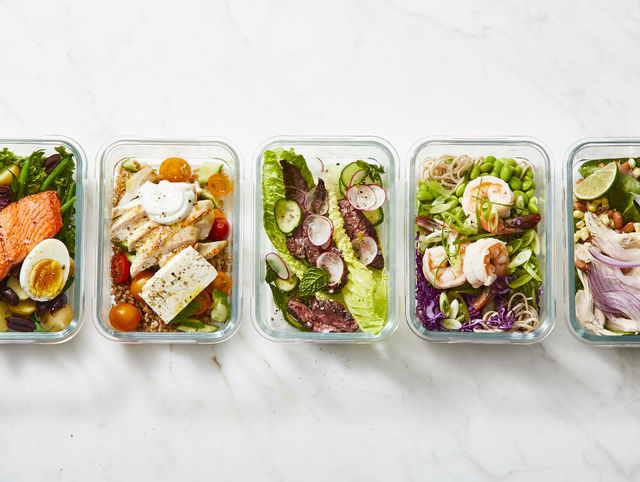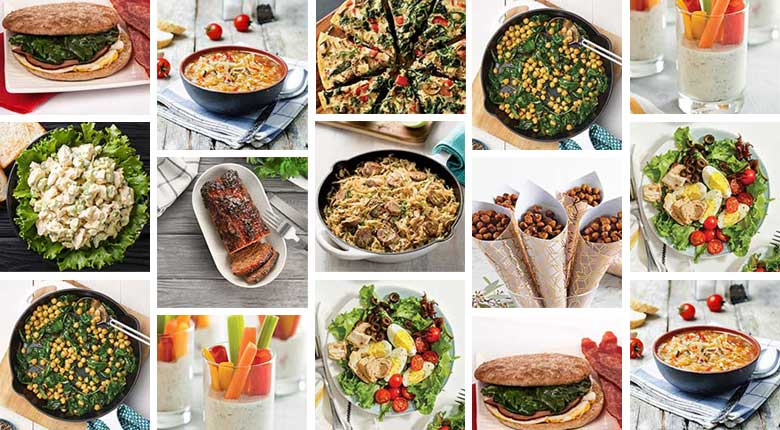Eating a healthy, balanced diet sounds easy, but in reality, cooking nutrition-filled meals every day is difficult for many people due to a myriad of factors. Fortunately, healthy meal planning is a great solution.
If you’re looking to achieve weight loss, nutrition is one of the first things you should focus on to shed body fat. Foods like vegetables, fruits and lean meats are packed with nutrients essential to sustain your body’s needs and better yet – they may curb your cravings.
Meal planning is referred to as the way of organising what you’ll be eating for the next few days, and a well-considered weekly meal plan can make it easier for you to follow through with your healthy lifestyle.
Aside from drawing up a systematic meal plan, you can also join programs like 28 at Home Fitness Challenge to monitor your fitness progress.
If you want to follow a healthier weekly meal plan, here are the tips you need to know!

#1 – Look For Sample Recipes
If you’re just starting out with meal planning, then looking for recipes and other meal plans online will help you plan the perfect weekly meal plan for yourself. Take inspiration from different meal plans out there and tailor one that’s suited to you.
As a reminder, you have to determine what dishes work for you. Obviously, certain ingredients might not be readily available in your local area due to season or cost. Or you may have other considerations such as dietary restrictions or allergies.
#2 – Make Sure To Include Every Food Group
Once you’ve accumulated recipes for your meal plan, check over it to ensure that every food group is included. In summary, a healthy meal plan consists of (ideally) organic whole foods like vegetables, fruits, whole grains, lean protein, and healthy fats.
Avoid refined grains and food items with excess salt and added sugars. The main culprits to consume in very low quantities or avoid altogether include:
- Food and drinks with added sugar like soft drinks, processed fruit juices, and sweets
- Refined grains or foods such as bread, pastries, and biscuits
- Salty food items and snacks like potato chips, canned foods, and processed meats
#3 – Check What’s Currently In Your Pantry
Before shopping for ingredients, do a stocktake of what’s in your pantry already so you won’t have to repurchase the same food items again! Keeping herbs and spices to hand is a must for hassle-free and tasty healthy meal preparation. Aside from flavouring your dishes, herbs and spices are packed with antioxidants that fight inflammation and cellular damage.
Also, take this opportunity to organise your pantry. This will also increase storage space so you can store more healthy ingredients. Establish an organisation system that works for you in the name of efficient meal cooking and preparation.
#4 – Shop Healthy Food Inclusions For Your Pantry
Once you’ve taken an inventory of your pantry, it’s a good idea to prepare your food storage areas such as the fridge and freezer. Then it’s time to shop for the ingredients for your meal plan.
From the recipes you’ve chosen, prepare a shopping list to save time and avoid missing a key ingredient which could throw you off your best intentions. Having a list will also help you stay on track and fight the urge to buy food you don’t need. You can get a good idea of what’s available beforehand by browsing online catalogues like Coles for inspiration.
Another great tip when shopping for groceries is to avoid doing so when you’re hungry. Even if you have a shopping list, the risk of impulse buying is increased when you’re craving food. To avoid temptation, have a healthy snack first to curb your hunger.
Some people organise their meal plans around supermarket sales to make the most out of their money. You may also want to take advantage of buying in bulk to save.
#5 – Cook In Batches
Now that you have both the recipes and ingredients, gather enough air tight containers to store your healthy dishes. Once you’re all set, it’s then time to cook the weekly meal plan.
If you don’t have time to cook during the week, cooking in batches is a great option. For instance, you could cook a batch of rice and roast a large tray of vegetables. Or you could cook all of the protein that you’ll use to top your salad.
After cooking your dishes, proceed with portioning them in airtight containers and let them cool at room temperature before putting each one in the freezer.
By following these tips above, you’ll always be guaranteed of having all the healthy options you need to maintain your healthy lifestyle.


No Comments